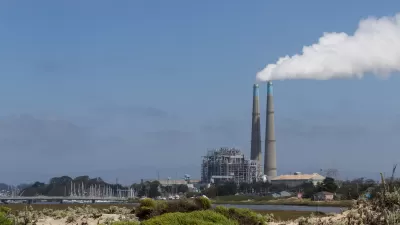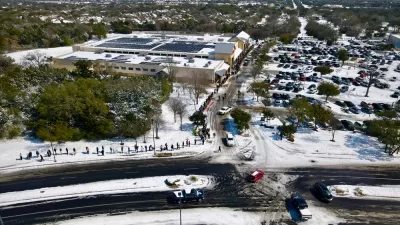Nations have sunk billions of dollars into carbon capture and storage for coal plants and have little to show for it. A new natural gas demonstration plant outside Houston is confident it is up to the task — without using federal grants.

In this "All Things Considered" radio report, science correspondent Christopher Joyce visits the NET Power plant natural gas power plant, still under construction, and speaks with the chief executive officer, Bill Brown. "[W]e'll be the first technology that takes fossil fuels and cleans up the carbon at no extra cost," claimed Brown. [An audio version is accessible in the article].
Applying carbon capture technology to coal plants has a long track record of canceled and "on hold" projects, not just in the United States, but in Canada and Europe as well, according to the Carbon Capture and Sequestration Technologies program at MIT, which stopped compiling data last September. The Petra Nova project, also outside Houston, may be the exception. More on that later.
Private funding is backing the new technology that will power the 50-megawatt demonstration plant in La Porte, Texas.
The engineering firm CB&I, and power company Exelon are partners. So is Toshiba. Toshiba's contribution is the turbine.
Most turbines make electricity when you force high-pressure steam through them. But Brown's turbine doesn't use steam. The plant burns natural gas to make high-pressure carbon dioxide — and uses that CO2 to drive the turbine.
Support from environmental groups?
Some environmentalists are excited by the technology. "From our point of view, we're talking about climate protection," said George Peridas, an engineer at the Natural Resources Defense Council, one of several environmental advocacy groups that support carbon capture research. "From the standpoint of the fossil fuel producers, I think they are looking at the bottom line. They are looking at survival; they are looking at creating new jobs."
Competition from renewables?
Right now, renewable energy is growing faster than any other source of energy, said Jonathan Levy, an energy investment analyst at Vision Ridge Partners.
"With the cost of wind and solar where they are, and continuing to decline," he told me, "it's hard to see why you'd go all in on a big fossil project that is more expensive than the other technologies."
The aforementioned Petra Nova project is included in a full-length feature article on CCS technology by Brad Plumer of Vox. Notwithstanding the miserable track record of most CCS plants, the technology "is garnering a surprising amount of support in Congress right now, with Democrats and Republicans working together to craft a pair of tax and finance bills that could help carbon capture spread more widely — not just for coal, but for gas plants, ethanol plants, steel plants, and other sources of pollution," writes Plumer.
FULL STORY: Natural Gas Plant Makes A Play For Coal's Market, Using 'Clean' Technology

Maui's Vacation Rental Debate Turns Ugly
Verbal attacks, misinformation campaigns and fistfights plague a high-stakes debate to convert thousands of vacation rentals into long-term housing.

Planetizen Federal Action Tracker
A weekly monitor of how Trump’s orders and actions are impacting planners and planning in America.

In Urban Planning, AI Prompting Could be the New Design Thinking
Creativity has long been key to great urban design. What if we see AI as our new creative partner?

Cal Fire Chatbot Fails to Answer Basic Questions
An AI chatbot designed to provide information about wildfires can’t answer questions about evacuation orders, among other problems.

What Happens if Trump Kills Section 8?
The Trump admin aims to slash federal rental aid by nearly half and shift distribution to states. Experts warn this could spike homelessness and destabilize communities nationwide.

Sean Duffy Targets Rainbow Crosswalks in Road Safety Efforts
Despite evidence that colorful crosswalks actually improve intersection safety — and the lack of almost any crosswalks at all on the nation’s most dangerous arterial roads — U.S. Transportation Secretary Duffy is calling on states to remove them.
Urban Design for Planners 1: Software Tools
This six-course series explores essential urban design concepts using open source software and equips planners with the tools they need to participate fully in the urban design process.
Planning for Universal Design
Learn the tools for implementing Universal Design in planning regulations.
Appalachian Highlands Housing Partners
Gallatin County Department of Planning & Community Development
Heyer Gruel & Associates PA
Mpact (founded as Rail~Volution)
City of Camden Redevelopment Agency
City of Astoria
City of Portland
City of Laramie




























